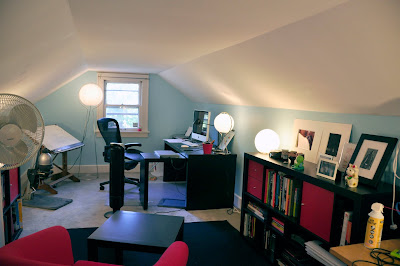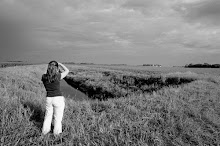When I decided to run my own design business full-time, there were certain tools I used that I kept using all the time and new ones that definitely have come in handy. Some of them were no brainers and ones that have always helped contribute to my creative process. No matter how much ready and planning I did ahead of time, there were some things, very practical things, that no one told me about that I have needed to rely on when trying to keep organized on this venture. I am hoping that this list will ring true for other freelance designers and will also help those who consider the path.
1. Reference Materials

I have always been a book fiend and that has not changed. I am still looking for inspiration through some of my tried and true sources but when I started freelancing, some new sources have really changed my perspective and idea about new trends and tools. I have to remain in touch, sharpen my skills and gain new directions as the design world constantly changes. One of the main ones I love to refer to is Computer Arts and Arts Projects magazines. They are from the UK and have great tutorials and artists from around the world. They also, often feature articles for self-employed artists and students.


I would highly recommend these magazines for designers and other creatives alike.
2. Sketchbook and Day Planner
I have always used a sketchbook and still do sketches every day for layout and concept ideas. I also have a couple of others that I use exclusively for my pencil sketches and carry around pencils, eraser and pencil sharpener all the time.
One thing that is kind of glossed over when people give advice about freelancing is the amount of organization you will need to have to get everything done and fulfill your obligations. When working full-time for a company, the business development, paychecks, scheduling, etc are handled by several people. When you run your own business, all of these things are up to you and sometimes this can seem overwhelming. One whole day can be spent looking for the next project, setting up meetings, writing articles, answering emails, daily inspiration, staying in touch with local art and the community, paperwork and accounting or brand management. There can also be lapses in work where you need to keep working on business development. Somewhere in there, design needs to happen as well. The only I way I have found to get all of this done is to prioritize and really be organized. I would be lost without my sketchbook and day planner for keeping my head on straight! My sketchbook also is great for drawing at a museum show and taking notes. It gets easier the longer you do it and learn your own tricks but it can be a sharp learning curve. The only way I made it work for me was to create an organized system and stick to that. I adjust when necessary, but I have my files and accounting organized in a way that makes sense to me.

I also have found a system of archiving that I can stay on top of, and trust me, this will become very necessary when all the work and files are your responsibility. Sometimes, learning this the hard way will set up a system for you.
3. Camera
For me, this is one of my greatest assets. I may be different than most in that I also pursue my photography development fairly seriously so my camera goes with me almost everywhere. This is to shoot reference materials, keep track of my blog posts, photographing ongoing projects and to keep records of various inspirational pieces. It can be bulky to carry around sometimes but it is one of my greatest joys as an artist.
4. Making Connections and Staying in Touch

Writing for my blog and also keeping in touch via Twitter (just a small list) are two ways that I keep people up to date on what I am working on. There are also great resources to stay motivated and to keep producing new work. I am always excited to see people's comments and to connect with other designers and artists in the area.
5. Looking for the Next Project

FreelanceSwitch.com and CreativeHotlist.com are just two of the places I check on a regular basis for possible freelance work. I am also always in touch with other people I know and using recruiters when necessary to find the next contract or freelance project. There are so many resources out there to tap into! Knowing your community and getting to know people sometimes is the best way to find the next piece of work. Always keep in mind when freelancing that no matter how much work you have or how hard you work, there are going to be ups and downs in workflow and income. This can sometimes seem like an unfair situation but those are the times to work on business development and pursuing other creative endeavors.
6. Supplemental IncomeAs much as the goal is to have continuous, ongoing work, I have found that having small projects that make some money and are creative are a good way to stay well rounded as a designer and keep supporting yourself.

In addition to my design work, I also write weekly articles for a photography blog (
photoble.com) that offers tutorials, tips and inspirational writings. It is a good way for me to stay in touch with my photography and support my other endeavors. It has greatly improved my shots and it definitely gets me out of the house and into the community.
7. Taxes and AccountingNo one really told me how much accounting I would be responsible for with every penny I make. It seems like every month, there is a new piece of information I have to be on top of. This aspect of running my own business is definitely one I wish I had more of a grasp on before I started.


But, I am not sure you can tackle it until you start. I would guess most designers are not thinking with this side of their brain. Find someone you trust to run through some of this with you.
8. A Place to WorkThis last one has completely saved me from being gloomy and disorganized when running my design business.


We converted our upstairs space into a quiet, inspirational and open studio space. It has two locations to work since my husband and I need to design there at the same time. We included a comfortable chair for sketching and a production desk for my photography projects and mock-ups. We also included a lot of lighting and all of our supplies and inspirational materials. When I work on-site somewhere, I always miss working in my space. It is calming and set up in a way that is familiar but also flexible.
I also work out of the house on my laptop several times a week. This helps me with client meetings but also to not feel isolated when I work alone. It is great to go to locations that are frequented by other people who are self-employed and further affirms my love for my community.
This is just a small list of things I use and have to think about when running my design business. It is not always easy and many things I have had to learn as I go. But, I love the design freedom and the ability to pursue multiple directions of creativity. It is all worth it in the end when you are working on something you love!
































































